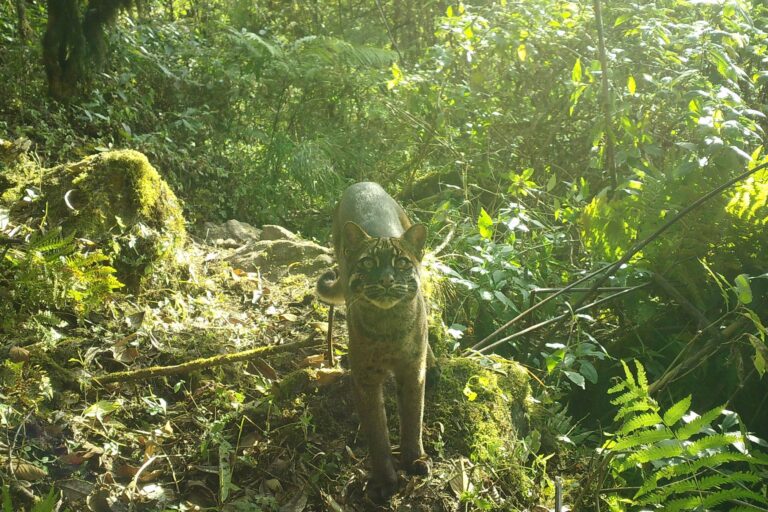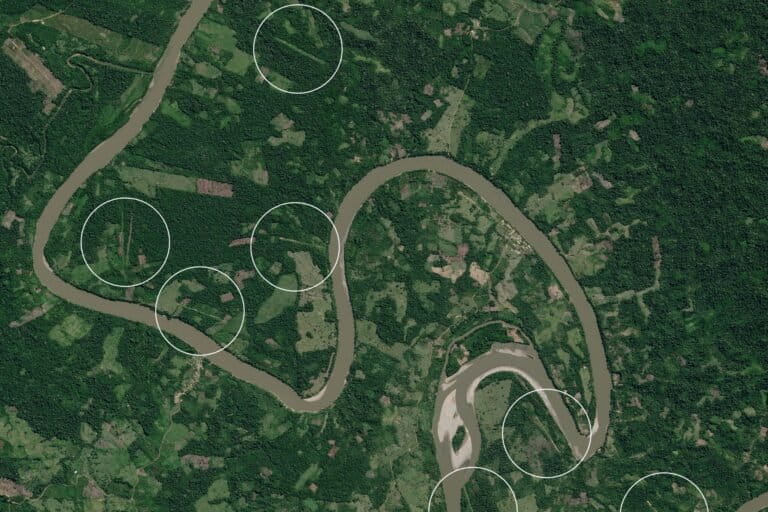- Marine biologist David Gruber said he made the discovery mostly by accident while filming biofluorescent coral off the coast of the Solomon Islands.
- Biofluorescence is commonly used for finding and attracting prey, for defense or for some kind of communication.
- It’s too early to say why the critically endangered hawksbill sea turtle would have developed biofluorescence.
Scientists have discovered the first ever glow-in-the-dark sea turtle.
National Geographic Emerging Explorer David Gruber said he made the discovery mostly by accident: He was filming biofluorescent coral off the coast of the Solomon Islands when the glowing sea turtle swam right by him.
The marine biologist captured the turtle on a specially rigged video camera system designed for capturing biofluorescent sea life. The only artificial illumination the rig uses is a blue light that matches the color of the ocean, while a yellow filter on the camera allows the scientists to see fluorescing organisms.
According to National Geographic, this is the first biofluorescent reptile ever discovered. You can watch a video of Gruber’s encounter with the critically endangered hawksbill sea turtle here.
Biofluorescence is different from bioluminescence, which is when animals produce light themselves through a series of chemical reactions or by hosting bacteria that are capable of giving off light. Biofluorescent organisms, on the other hand, reflect blue light as a different color, most commonly green, red or orange. It is believed to be used for finding and attracting prey, for defense or for some kind of communication.

Researchers who recently found biofluorescence in a number of bony and cartilaginous fish, including sharks, rays, small crustaceans and mantis shrimp, have speculated that the presence of yellow filters in the eyes of many biofluorescent fish, coupled with the substantive color vision capabilities of coral-reef fishes, suggests that they are capable of seeing fluoresced light.
Gruber said it is too early to say why the hawksbill sea turtle would have developed biofluorescence. “What is it doing in these turtles?” Gruber asks in the video. “We know they have really good vision. They go on these long and arduous migrations. But how are they using this [biofluorescence]? Are they using it to find each other? Or are they using it to attract each other?”
In addition to whether the turtles can see the biofluorescence and what they use that ability for, Gruber says there are other interesting questions to answer, such as where the hawksbill sea turtle gets the ability to biofluoresce in the first place. Do they consume compounds with their food that lets them fluoresce, or do they make their own somehow? And do other sea turtle species also possess the ability to glow?
Doing further research on the hawksbill sea turtle would be very difficult, Gruber says, because “there are some places where there are just a few thousands breeding females remaining.” National Geographic notes that hawksbill sea turtle population numbers worldwide have declined by nearly 90 percent in recent decades.
But Gruber says there are other species, such as the green sea turtle, that are closely related to the hawksbill that he is now eager to take a look at.














